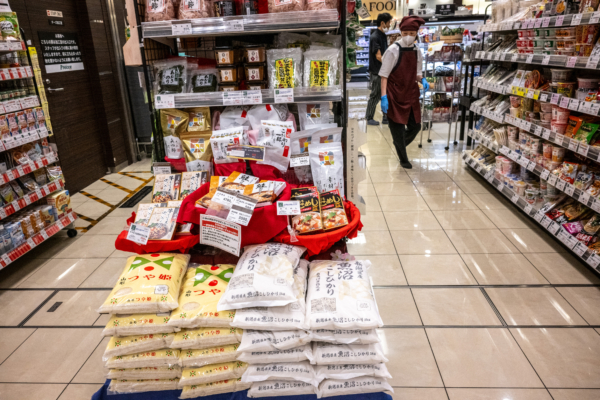Japan’s Ministry of Internal Affairs and Communications announced on Friday (August 22) that the overall inflation rate and core inflation rate in July both fell to 3.1%, lower than June’s 3.3%. The overall inflation rate hit a new low in 9 months, while the core inflation rate reached its lowest point in 5 months.
The report showed that the core inflation rate in July dropped to 3.1%, mainly due to the continued slowdown in rice price increases. The inflation rate of rice prices decreased from 100.2% in June to 90.7% in July, after doubling in April and May. However, the core inflation rate remains above the market’s expectation of 3%, indicating that the inflation pressure in Japan has not yet subsided.
The “core-core inflation rate,” which excludes fresh food and energy prices, remained at 3.4%, unchanged from the previous month. This inflation rate is an important indicator closely monitored by the Bank of Japan.
This year, Japan has been a focus of market attention due to rice shortages and soaring rice prices. However, there have been signs of easing in rice prices recently.
According to data from the Ministry of Agriculture, Forestry and Fisheries, as of the week ending on August 4, the average retail price of a 5-kilogram bag of rice in Japanese supermarkets was 3,737 yen (approximately $25.34). During the period of rising rice prices, the average retail price for a 5-kilogram bag of rice reached 4,285 yen (about $28.8), while premium rice brands rose to 4,469 yen per bag (approximately $29.94).
The data indicates an average decrease of about 12.8% in rice prices.
In the economic outlook report released by the Bank of Japan on July 31, inflation forecasts were revised upward, with the core inflation rate expected to reach 2.7% for the 2025 fiscal year (ending in March 2026), higher than the previous forecast of 2.2%. The expectation for the “core-core inflation rate” was also adjusted from 2.3% to 2.8%.
Despite the partial easing of price increases indicated by the overall inflation rate in July, inflation still exceeds the Bank of Japan’s 2% target, and the market expects the central bank to raise the benchmark interest rate again this year.
In terms of economic performance, Japan’s GDP grew by 0.3% in the second quarter, surpassing market expectations, primarily driven by net exports. However, trade performance in July was weak, with exports experiencing the largest decline in over four years, significantly dropping shipments to the United States and China.
On July 22, Japan reached an agreement with the United States, reducing tariffs to 15%, which eased some pressure on Japanese exporters. However, weak global demand remains a major challenge.
(This article referenced reports from CNBC and Bloomberg)

